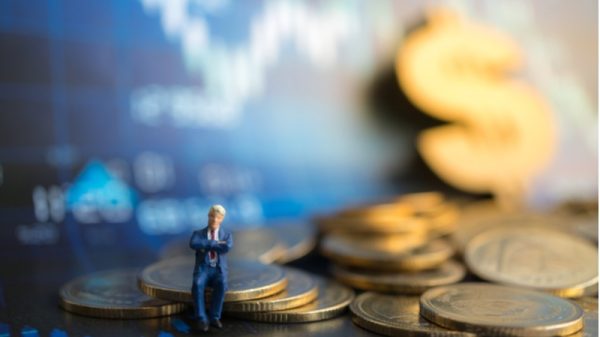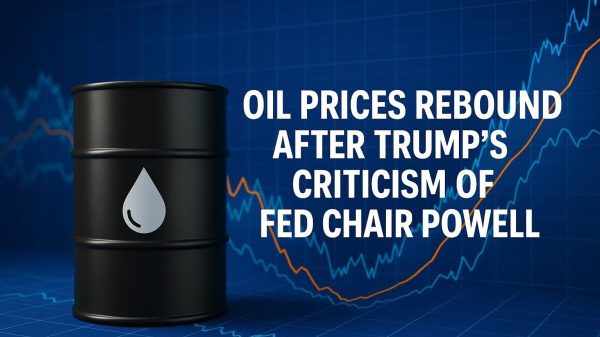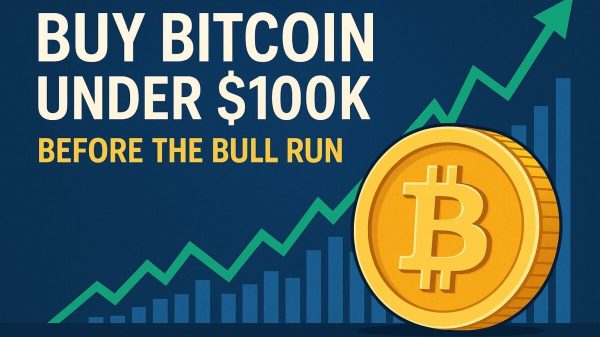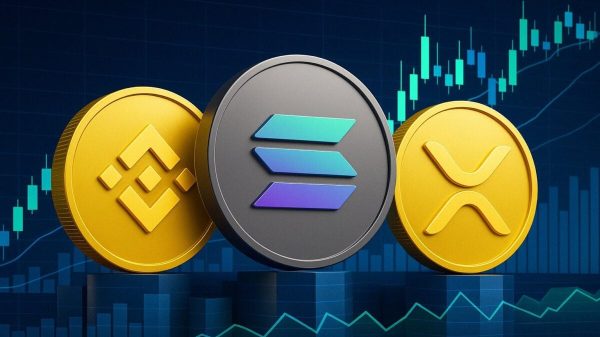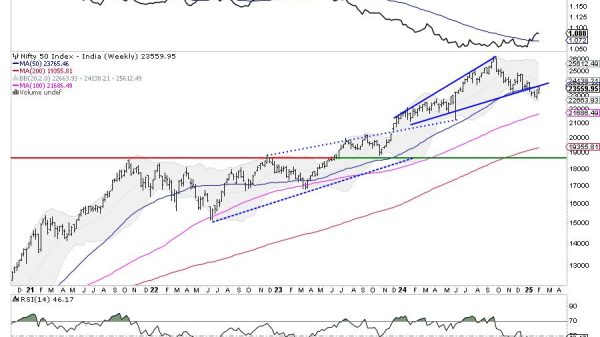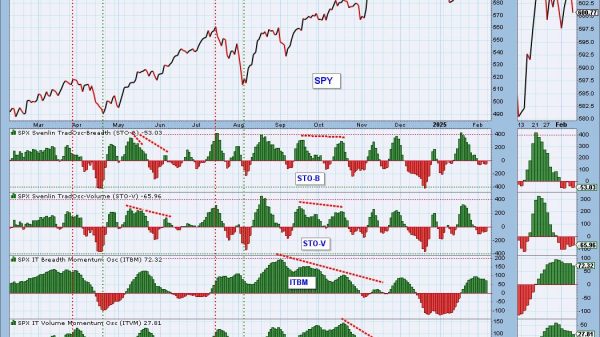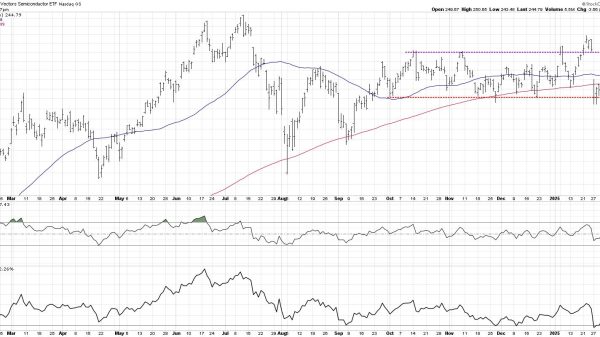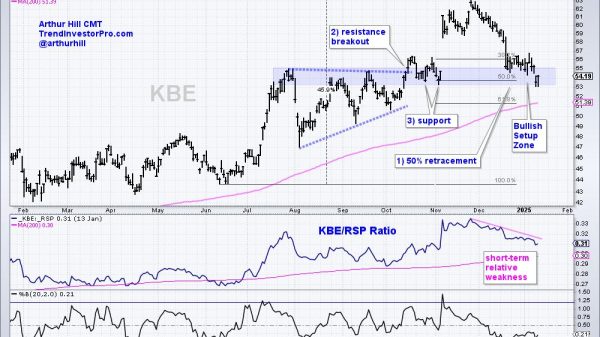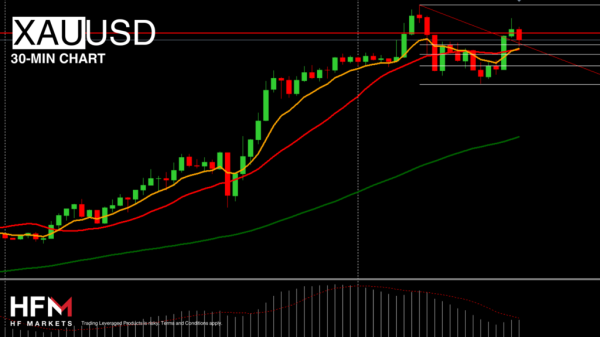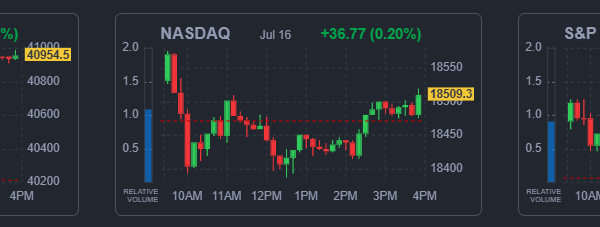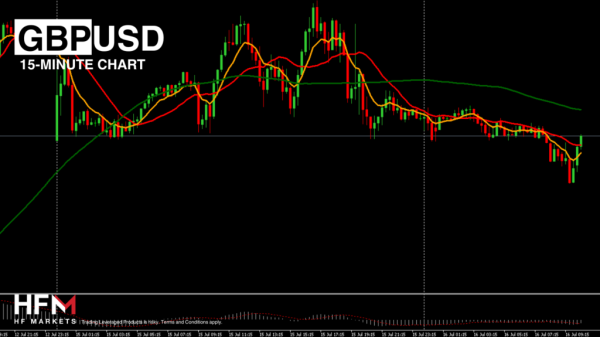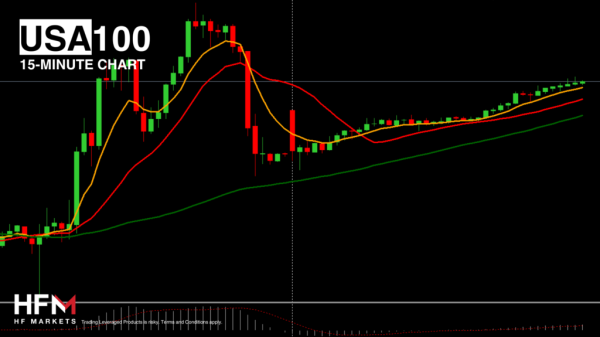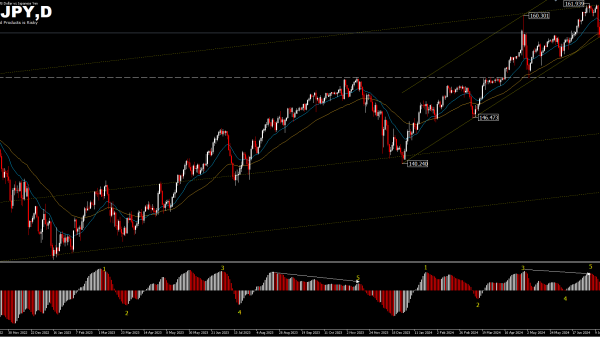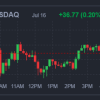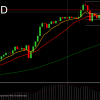In both cases a (usually near the money) option is sold and used to partially fund the purchase of two (or more) out of the money options. Let’s see an example:
Let’s say Apple was $710 in the beginning of September and we thought it was going to rise in value, quickly. We might put on a call backspread:
Sell 1 AAPL Sep 710 Calls Buy 2 AAPL Sep 720 CallsIt might cost us $50. Here’s the profit and loss diagram:
As you can see if we are correct, and AAPL rises, we will enjoy any rise over $720; for every $1 over $720 we make $100 profit. All for an investment of $50. So you can see how lucrative this can be.
Should we be completely wrong, and AAPL falls heavily, we will only lose our $50.
The risk is that AAPL stays around $710. There’s the potential to lose $1000.
Call Ratio Backspread vs. Put Ratio Backspread
A put ratio backspread is a bearish options trading strategy that combines short puts and long puts to create a position whose profit and loss potential depends on the ratio of these puts. A put ratio backspread is so called because it seeks to profit from the volatility of the underlying stock, and combines short and long puts in a certain ratio at the discretion of the options investor.
The put ratio spread is similar to call ratio spread, but instead of buying two or more call options and selling one call option to finance the strategy, you would buy several put options and sell one put option to help finance the purchase of the two puts.
If the stock goes down by a significant amount, the strategy earns money from the two puts to offset any loss from the one put that was sold.
Reduce Risk Of No Movement
We saw in the last lesson that backspreads can be used to exploit expected sharp moves in stocks. We looked at an example, a AAPL call backspread. We also found that the key risk at expiration is non-movement in AAPL. How do we counteract this?
The key to managing non movement risk is not to hold the position to expiration.
Look the profit and loss above again.
You will notice the dotted line. This is the profit and loss 2 weeks before expiration. Notice that any loss – how much the dotted line is below $0 – is small, and lower than the expiration worst point of $710, at this stage. Notice too that the upside has been earned by this time: the gap between the two lines is small as the stock rises over $710.
This is the key to trading backspreads successfully. It is possible to get most of the upside at minimal risk if we make sure we are out of our position well before expiration.
Before we detail the way to exploit this, let’s go through the (quite complex) Greeks of the backspread.
Backspread Greeks
Let’s go through the options greeks of the backspread, and how it might affect our strategy. We’ll use our AAPL call backspread example to illustrate this.
Delta
For most of the time before expiration the delta of a (call) backspread is positive (except if the underlying falls significantly when delta is flat or slightly negative).
Gamma
Gamma is positive where it matters most (as the underlying rises).
Theta
Theta is the key risk with backspreads. As we’ve seen non movement becomes more loss making with time. In other words if there is no stock movement the backspread will lose money; it has positive theta. It becomes more positive as time goes on; hence we avoid hoilding the position close to expiration.
Vega
Vega is positive. As volatility rises, the position increases in value.
This makes the call backspread our backspread of choice. Should we get the trade wrong, and the stock falls (we want it to rise), volatility will also rise. This would provide a bit of protection as the position would rise with vega being positive. Volatility provides a natural hedge.
Rho
Given the short time we plan to keep the position, rho isn’t really a key concern.
The key point then is that we want our stock to move quickly after we put the position on. Should it not move, or move in the wrong direction, we will remove the trade, well before time decay from theta hurts us.
Backspread Adjustments
General View Of Adjustments
We’re not a great fan of adjustments here at SteadyOptions.
In general adjusting a losing position in the hope that it comes good is similar to doubling down on a bad bet: eventually it will produce a too large to double-down-on loss. They tend to involve increasing a position and/or risk; a potential for disaster.
Backspreads Are A Possible Exception
Anyway, backspreads are a possible exception. Because the loss on a poor performing position stays small well before expiration, it is possible to close it for small loss and then put the backspread on at a different (lower for a call backspread) point.
The key, as always with adjustments, is to only do this if we would have been willing to put the resulting position on fresh.
A good example would be where we expected a strong positive announcement on a share which hadn’t yet happened. The share may have drifted down whilst the market waited. But we still believe the announcement to be imminent and hence want to adjust our position to continue to look for the big move. The call backspread adjustment allows us to do this.
When Would We Consider Adjusting?
Let’s use the call backspread example from 6.1. If you remember we put on the following trade for $50 about 30 days from expiry and with AAPL at $710 (and us expecting it to rise before the end of the month):
Suppose after a few days AAPL drifts down to $700. As can be seen from the P&L diagram this is not a disaster, even though the stock has moved in the wrong direction:
The ‘loss’ on the trade may be only $5-$10 or even less.
However the bigger issue is that stock has moved away from the profitability zone (currently about $705 and moving higher). In addition the stock would soon have to move through the trade’s highest point (around $710) to reach profitability. This reduces the profitability of success substantially.
And so what to do?
Well, we could just remove the trade for a very small loss. And usually we would recommend this. But adjusting back to something that looks like the original trade is quite cheap early on in the trade.
Possible Adjustment
How would we adjust? Well we could just remove the existing backspread and put on another one centered on $690:
Remove original backspread:
Buy 1 AAPL Sep 710 Calls Sell 2 AAPL Sep 720 Calls Proceeds: $45Set up new backspread:
Sell 1 AAPL Sep 690 Calls Buy 2 AAPL Sep 700 Calls Cost: $50The net cost is small ($5) – but may be much higher with commissions and slippage.
This last point is the key: you’ll have to weigh up whether the total cost is worth it to adjust. The though process is, as ever, would I be happy to put this position on fresh at this cost (including adjusting costs)?
Call Backspreads: Trade Plan
Let’s finish by putting everything we’ve learnt together and set out the full game plan for trading Call Backspreads…
Step 1: Choose Your Underlying
This is key.
You’ll only ever want to put on a call backspread if you believe a stock is about to shoot up in value quickly.
Step 2: Put on a call backspread ‘centered’ on the current price
Let’s say, for example you thought EBAY was going to rise from its current $52.
You could sell a 50 Ebay call and buy 2 52 Ebay calls (at the same expiry).
30-40 days out is perfect.
Step 3: Close if position loses or gains 20%
Our aim is jump in and out of these trades quickly. And to average more winners than losers.
Step 3 (alternative)
You could decide to adjust if the position loses 20% with there still being 20 days or more at expiry.
If so (i.e. you think the stock will still rise), close the position and go to step 2.
(Be careful: you can only ever hope to regain your loss using this method. It is only good to do if you are still sure the stock will rise quickly soon.)
The Bottom Line
In conclusion, backspreads can be an effective strategy for experienced options traders seeking to profit from significant price movements in the underlying asset while managing potential losses. By selling a certain number of call/put options and simultaneously buying a greater number of call/put options, traders can create a spread with unlimited profit potential.
However, it’s important to note that backspreads are a complex strategy that requires a good understanding of options trading and market dynamics. Traders and investors should carefully weigh the risks and rewards, including the maximum profit and loss potential, before incorporating this strategy into their portfolio. With proper knowledge and risk management techniques, backspreads can be a valuable addition to a trader’s options toolkit. About the Author: Chris Young has a mathematics degree and 18 years finance experience. Chris is British by background but has worked in the US and lately in Australia. His interest in options was first aroused by the ‘Trading Options’ section of the Financial Times (of London). He decided to bring this knowledge to a wider audience and founded Epsilon Options in 2012.
Subscribe to SteadyOptions now and experience the full power of options trading at your fingertips. Click the button below to get started! Join SteadyOptions Now!
Related articles
Options Greeks: Theta, Gamma, Delta, Vega And Rho Options Vega Explained: Price Sensitivity To Volatility Options Theta Explained: Price Sensitivity To Time Options Delta Explained: Sensitivity To Price


